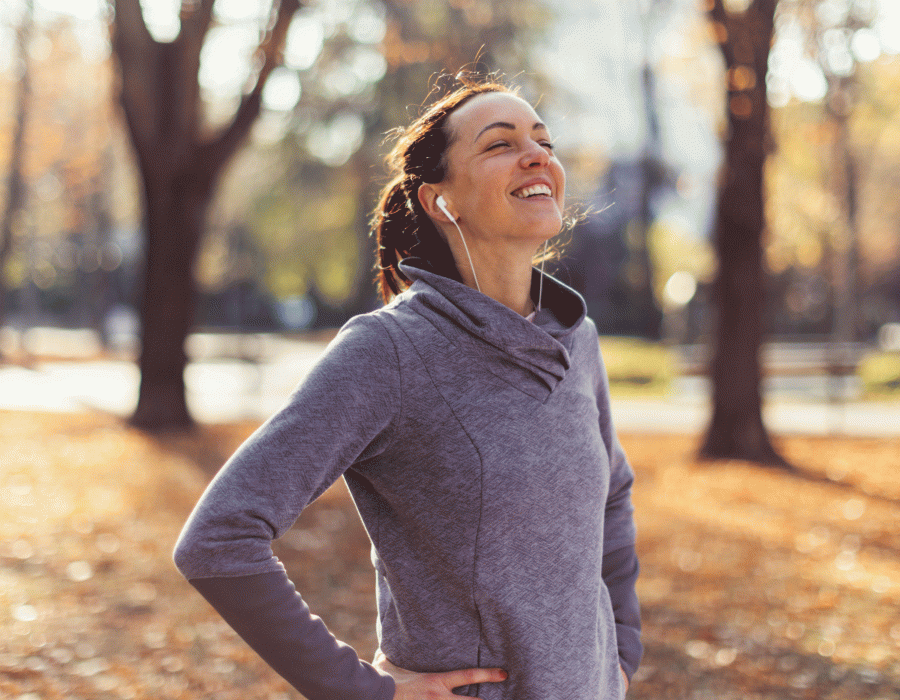Fitness and Performance
Long Covid recovery and rehabilitation

Long Covid recovery and rehabilitation
It goes without saying that Covid has disrupted our lives in many ways – socially, physically, professionally and emotionally.
Some of you may have contracted the virus but shown no symptoms, or experienced symptoms which improved after a few weeks. For others, the symptoms can last for months. This is now referred to as ‘Long Covid’, which you may be familiar with by now.
At present there doesn’t seem to be a link between the severity of your initial symptoms and having longer lasting issues. Even those who have suffered milder symptoms, have found that they have persisted.
The aim of this blog is to provide you with some actionable advice and positive reassurance, to help you move forward and get back to your usual self after Covid.
The most common Long Covid symptoms (NHS, 2021)
- Extreme tiredness (fatigue)
- Shortness of breath
- Chest pain or tightness
- Problems with memory and concentration (“brain fog”)
- Difficulty sleeping (insomnia)
- Heart palpitations
- Dizziness
- Pins and needles
- Joint pain
- Depression and anxiety
- Tinnitus, earaches
- Feeling sick, diarrhoea, stomach aches, loss of appetite
- A high temperature, cough, headaches, sore throat, changes to sense of smell or taste
- Rashes
These symptoms can make it harder to exercise, work, stay alert and can cause stress and anxiety. But, with a combination of rehab, symptom monitoring and a gradual increase in activity, you should start to see significant progress in your recovery.
Firstly, if you haven’t already, get in touch with your GP and book in a check-up. They’ll be able to tell you whether there’s anything else causing or contributing to your lasting symptoms.
Dealing with anxiety and isolation
When you’re tired, and struggling to work or to walk to the shops it can be hard to motivate yourself.
The first thing that can help to reduce stress and anxiety is to continue to stay in touch with your social circles. Even when you can’t see them in person, picking up the phone, sending a text, a facetime or Zoom call to your family, friends or colleagues can provide you with a huge boost.
Try to make a habit of getting dressed every morning, even if it’s from your PJs into leggings and a jumper. This will separate your sleep time from your daytime. Building routines, breaking up your day with regular, healthy meals and drinking plenty of water will help you to feel a sense of normality.
Oh, and one more thing, try to avoid continuously watching or reading the news. This will make it extremely hard for you to switch off and focus on other things.
Getting your body moving
Reducing fatigue can be difficult, especially when you’re stuck at home. The best way to start is to make sure that you do ‘something’ once an hour. Your ‘something’ could be walking to the kitchen to get a cuppa, doing some gentle stretches or putting on some music and dancing around the living room.
Doing these small things, little and often, will get your muscles moving and help increase your endorphin a.k.a (happy) levels. As you start to feel improvements, try going out for short strolls. Start with 1-3 10–15-minute per day and work up from there.
Focusing on your breathing
It’s good to take a break a few times a day and focus on relaxing and breathing. Here is a super easy breathing exercise that you can do anywhere:
- Sit, stand or lie down with one hand on your chest and one hand on your belly.
- Breathe in through your nose for a count of 5, letting your belly expand.
- Breathe out through your mouth for a count of 5, feeling your belly relax.
- Repeat for 1-5 minutes.
Starting to exercise again
As mentioned above, getting yourself moving around the house more, and going out for a stroll is a great starting point. Doing this will kickstart your journey back to exercising and rebuilding your fitness levels.
Walking will help to reduce the feelings of fatigue and shortness of breath, as well as working to relieve any joint or muscle aches, and gastric issues. Strength and cardiovascular fitness take time to build, even more so after a virus, so give yourself the time you need, and don’t be discouraged when you hit a setback.
Alongside moving and walking, try doing simple exercises to start using more of your muscles again. Exercises such as bridges, squats, arm raises, and even balancing on one leg can start getting the muscles working. From here, it all depends on what it is you want to achieve…
How physiotherapy can help post Covid…
This advice is, of course, very generalised, and how you feel, or how much you can do, will inevitably vary from person to person.
If you’re still struggling, you may need a more specific programme to get back to your usual self again.
If you reach the stage where your fatigue is reducing, but you’re still unable to get back to your previous routines or fitness level, we recommend popping in to visit one of our physios.
We will assess where you’re at, where you want to be, and put together a plan to get you there. We will work with you to build your strength, improve your fitness, and help you transition back into doing the things you love.
Our clinics are open for face-to-face physiotherapy appointments, with measures in place to keep you safe. Travelling to physiotherapy appointments is deemed essential travel, so if you’re need of some support, we’re here for you.
